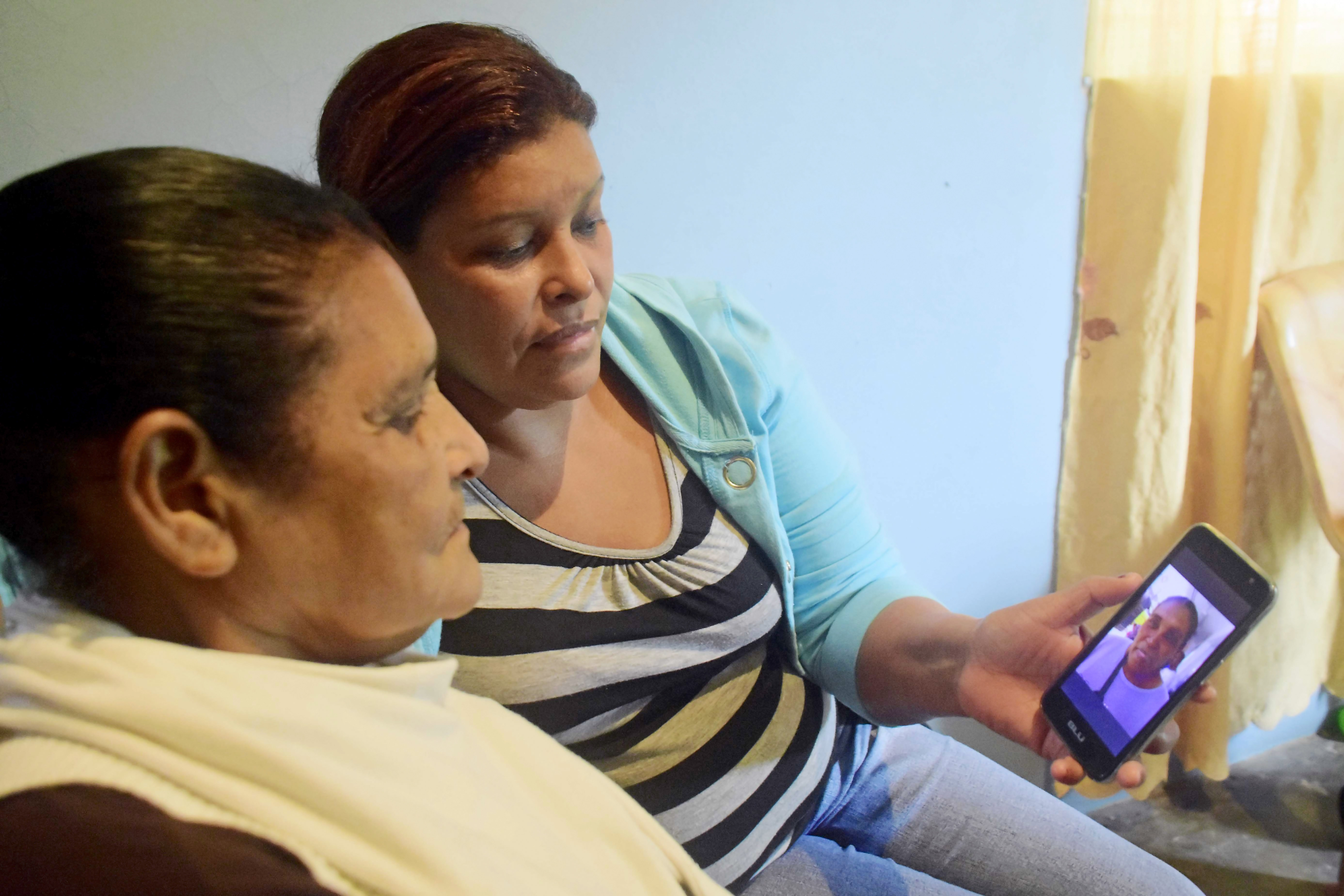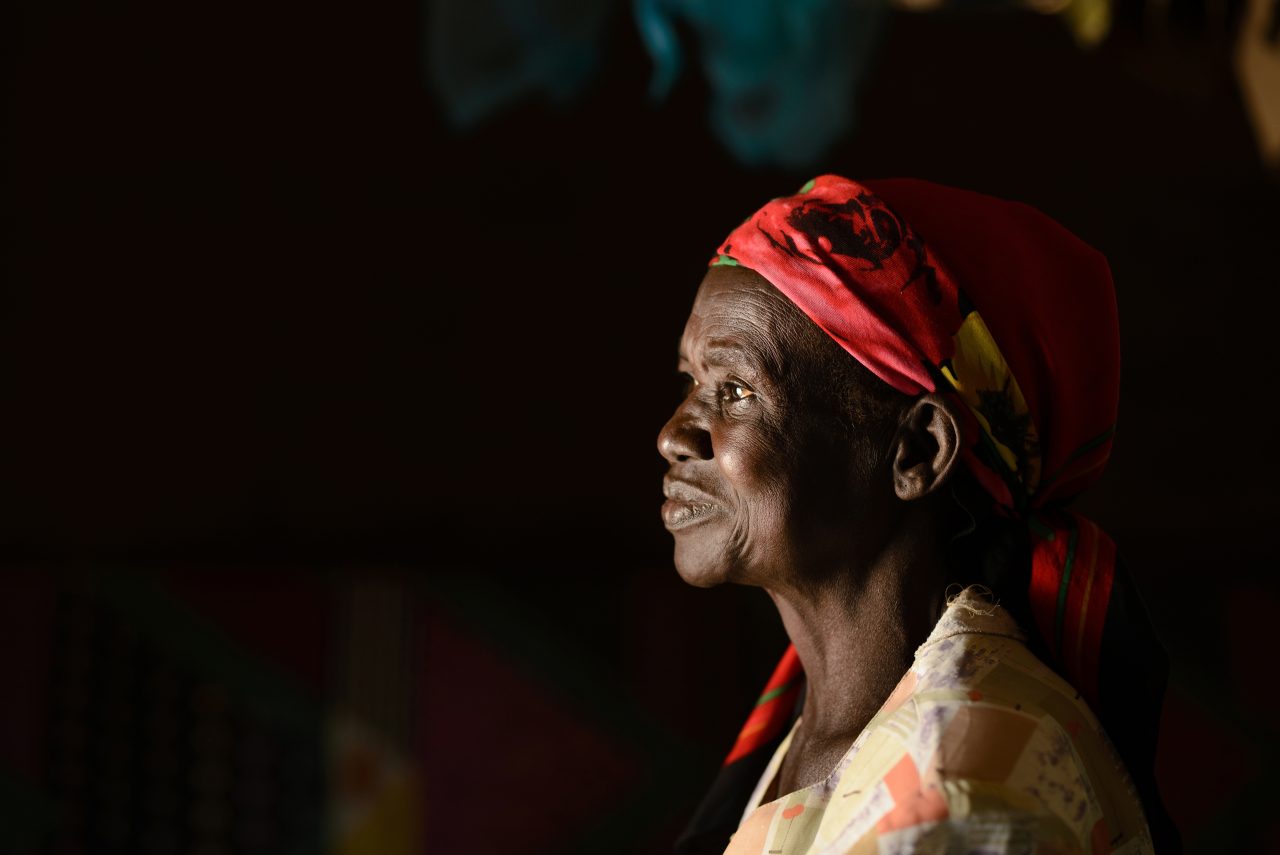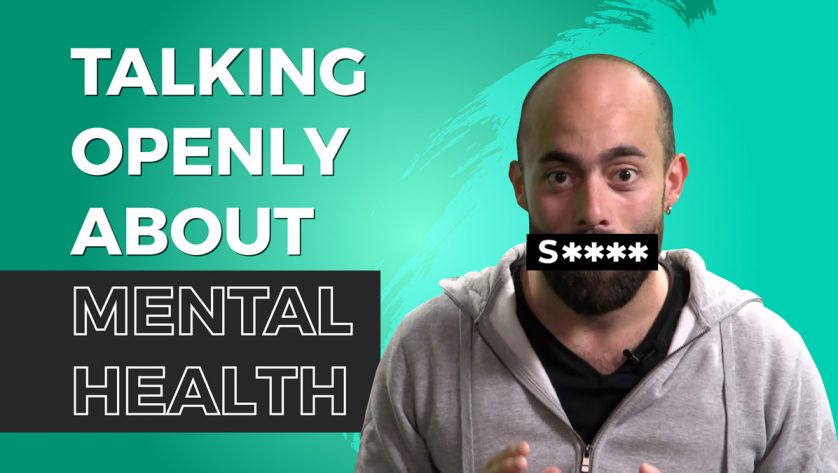Holding on to hope
Each time Dilma Pilar set out from Honduras with the Caravan (her first was in 2011), she did so with joy and optimism, imagining that she would find her daughter on one of the streets the caravan passed through.. When this did not happen, she would return with a heavy weight on her heart.
“My daughter has been killed,” she would repeat to herself over and over as she returned to Honduras after the first two journeys.
One day, the national and international media reported the mass murder of 72 migrants in Tamaulipas. That was in August 2010. Dilma Pilar was watching the television with her daughter, Nilvia, who is five years older than Olga. The first thought that passed through her mind was: “My daughter is there.” Sixteen of the seventy-four bodies, most of them Honduran, discovered by the Mexican authorities were women.
“No, mama, don’t say that. As long as Olga’s body is not found, we must not give up hope,” Nilvia said, holding her mother’s hands and trying to console her.
In spite of news stories like this, Dilma Pilar never gave up. She had to find Olga whether she was dead or alive. She was determined to know what had happened. With the support of various institutions, Dilma Pilar kept up her search. In 2013, members of the Argentine Forensic Anthropology Team took DNA samples from the family members of migrants. Occasionally, COFAMIPRO mothers were notified that the remains of their missing sons or daughters had been found.
This continued until mid-2016, when she received the first indication that her daughter was alive through the MAE, the external support mechanism created by the government of Mexico to assist families in their search for missing migrants.
Several months after COFAMIPRO supported Dilma Pilar in submitted a search request with MAE, a report came through with a photo. It was her: Olga Edelmira. She had changed a little over this time but was still the same short, dark-haired, dark-skinned girl, with a shy smile. She was in Tuxtla-Gutiérrez.
“That’s her; she hasn’t changed at all. She still does her hair in the same way in a bun,” she said to herself.
The report stated that her daughter was alive and had been issued a residence permit in Mexico in April 2016. In January 2017, Olga applied to renew her residence permit. Through the MAE, it was established that Olga had requested two birth certificates. In this way, Dilma Pilar learned that her daughter had two more children, a boy of five and a girl of three. Olga was not just alive; she had started a new family.
Encouraged by this proof that Olga was alive, Dilma Pilar decided to go with the caravan of mothers again in December with the hope of being reunited with Olga. However, when the caravan reached Tuxtla-Gutiérrez, they were unable to make contact with her daughter. They put up flyers in the streets around the city, featuring the most recent photograph and a temporary telephone number in Mexico for anyone who recognized her or who had more information to call.
Five days later, after the mothers’ caravan had left Tuxtla to continue its journey, a Salvadorean woman who worked with migrants in the area called the number on the flyers to say that they had found someone who looked like Olga. They sent a short video using the WhatsApp application to confirm it was in fact her. In the video, Olga said that she was alright, that she was sorry for not having been in touch in all this time, that she had lost her mobile and that she hoped to see her mother soon.
The video encouraged Dilma Pilar to continue the journey with the other mothers, hoping to see her on the way back. But on that chilly night before leaving Honduras, there was still no additional news on how to reach Olga and she went to bed anxious and deeply disappointed.
What she didn’t know was that the “press conference” organized for the morning before their departure was in fact a meeting — set up by the Caravan members —that would end in tears of joy and a long-awaited embrace or her daughter Olga.
As it turned out, she also got to meet and hug her two new grandchildren, Moisés and Valeria, aged seven and five, who were waiting, along with her daughter’s husband, to surprise her in one of the meeting rooms at the hotel that was the last stop on the caravan’s tour, surrounded by the other mothers and a number of journalists. The supposed press conference culminated in this emotional reunion, ending eight years of anguish.
As the two spoke in the coming days, Pilar finally learned the full reason that her daughter left Honduras so abruptly many years ago. A few days before she took the decision to leave, she witnessed a break-in and robbery at her landlord’s house next door to their home. The thief, a neighbour, threatened to kill her if she reported him. Gripped with fear, she decided to migrate, without notice, along with some colleagues at the factory.
 Red Cross Red Crescent magazine
Red Cross Red Crescent magazine 







 Tech & Innovation
Tech & Innovation Climate Change
Climate Change Volunteers
Volunteers Health
Health Migration
Migration